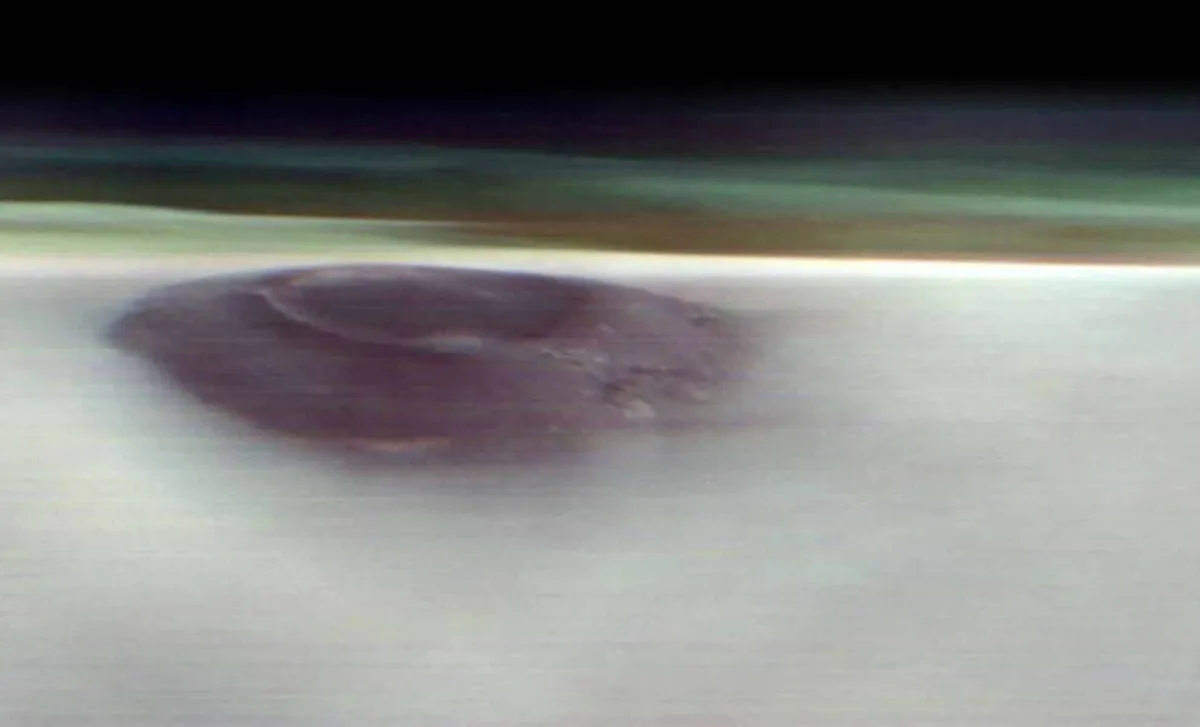
A recent image captured by NASA's Mars Odyssey orbiter showcases an extraordinary sight: a massive geological formation breaking through Mars’ early morning cloud cover. This stunning photograph, taken just before dawn on May 2, 2025, was released by NASA’s Jet Propulsion Laboratory on June 6. It offers an unprecedented view of the Martian horizon, marking a significant milestone as it is the first time such a large feature has been observed from orbit rising above the clouds. This breathtaking perspective mimics views typically associated with Earth-based space exploration.
The remarkable image reveals a single, massive peak emerging from a thick blanket of clouds hovering low over the Martian surface. Located in the Tharsis region of Mars, this formation pierces through the upper atmosphere, resembling a sentinel standing guard at the edge of the world. The surrounding clouds, primarily composed of water ice, form in the cooler temperatures of early morning, creating a striking visual contrast between the pale, luminous clouds and the dark, imposing structure that rises above them. Jonathon Hill, operations lead for Odyssey’s Thermal Emission Imaging System (THEMIS), expressed his excitement, stating, “We picked this location hoping we would see the summit poke above the early morning clouds. And it didn’t disappoint.”
This captivating image is part of an ongoing initiative to study Mars’ upper atmosphere across different seasons. Since 2023, the Mars Odyssey has been capturing high-altitude views of the Martian horizon, providing critical insights into cloud dynamics, dust patterns, and atmospheric layering. These observations are essential for scientists as they track how weather conditions on the Red Planet evolve over time. Michael D. Smith, a planetary scientist at NASA’s Goddard Space Flight Center, noted, “We’re seeing some really significant seasonal differences in these horizon images. It’s giving us new clues to how Mars’ atmosphere evolves over time.” Understanding these changes is vital for deciphering long-term climate behavior and its effects on surface conditions.
The towering structure captured in the image is often surrounded by dense morning clouds, especially during Mars’ aphelion—the point in its orbit when it is farthest from the Sun. During this period, a broad band of clouds encircles the planet’s equator, known as the aphelion cloud belt. These clouds form as moist air rises over high terrain, cools quickly, and condenses. The newly released image vividly illustrates this process, with the formation pushing through the uppermost layer of the atmosphere like an island in a vast sea of fog. Although the geological feature itself remains stationary, the dynamic behavior of the clouds surrounding it suggests a planet in constant atmospheric motion.
The THEMIS instrument aboard the Mars Odyssey orbiter, originally designed for surface imaging, has increasingly proven valuable for atmospheric studies. Its ability to detect visible and infrared light enables it to analyze temperature variations, identify subsurface water ice, and even study Mars’ two moons, Phobos and Deimos. These capabilities have allowed this long-operating spacecraft—now the oldest mission actively studying Mars—to adapt to new scientific objectives. By shifting its observational focus from the surface to the horizon, THEMIS is significantly contributing to a deeper understanding of the Martian climate system, capturing views that were once deemed unreachable.